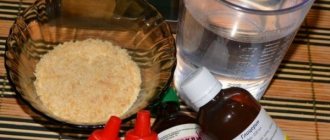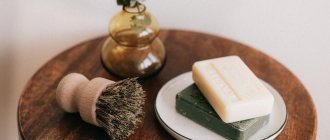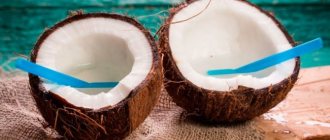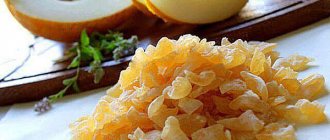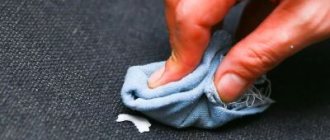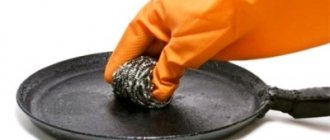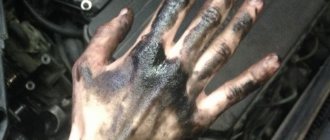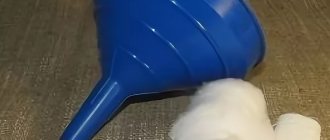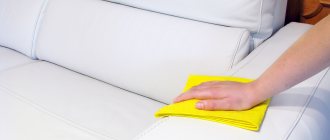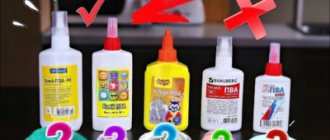Recently, soap making at home has overwhelmed those who like to do something with their own hands. This fascinating process quickly becomes a hobby. And there are much more benefits in natural soap than in store-bought soap, which is full of chemical ingredients.
Therefore, we suggest learning how to make soap yourself. Step-by-step instructions and an accessible explanation, which you will find below, will certainly help in this exciting matter.
Making soap at home: what do you need?
Soap making is one of the areas of modern Hand made, which involves making useful things yourself. What should you stock up on before you start making soap?
1. Basic foundation. There are three basic options.
- Baby soap, which is grated and is the base for all other ingredients. This option is perfect for those who are starting to try themselves in this business. Having filled your hand, you can move on to other materials.
- Special soap base. It is available for sale in handicraft stores and is a ready-made base for work.
- Professional soap makers use oil and lye to make soap. The consistency of the future soap will depend on the amount of alkali added.
2. Oil included in the base. You can take any mineral or vegetable. The main task of this component is to nourish and moisturize the epidermis. Alternatively, the following oils are suitable:
- almond;
- castor;
- olive;
- cocoa butter, etc.
3. Flavors. Their role is played by essential oils from fruits and herbs.
When choosing such a flavoring, you should pay attention to the needs of the skin, since, for example: orange oil helps to saturate with vitamins and get rid of cellulite, but tea tree copes well with excess oily skin.
4. Pigment (dye). There are two options for coloring soap:
- food coloring or a special dye for coloring soap, sold in the same craft store;
- natural, herbal decoctions, vegetable and fruit juices come to the rescue here.
5. Auxiliary elements. These include:
- liquids for diluting soap base (milk, water, herbal infusions);
- decorative elements (poppy, flowers);
- scrubbing particles (coffee particles, oatmeal);
- vitamin supplements;
- glycerol.
6. Equipment for work. These are the dishes in which the soap mass will be boiled and the molds where it will harden.
Soap making. Start
To make soap from soap base at home, all you need is a kitchen table next to the stove. And you can familiarize yourself with the basic principles of this process in the article “Soap from Soap Base”. The entire work process is described in three words:
- melt;
- enrich;
- pour.
Soap ingredients
You need the following materials:
- Soap base, white and/or transparent.
- Dyes, food or pigment. Food grades can also be used in the preparation of sweets. But pigment ones are brighter, more resistant to fading and, unlike the first ones, do not color all adjacent layers. This is true for multi-layer soap. There are dyes for a transparent base that do not cloud it.
- Mother of pearls, glitters. Mother-of-pearl (mica) colors and adds shimmer, glitter gives shine.
- Base oils, extracts, infusions to enrich the base.
- Essential oils or fragrances to add scent. Esters also transfer their beneficial properties to the base. And they remain even when the smell becomes weak. It is advisable to use fragrances with a fragrance fixative.
- Medical alcohol in a spray bottle. Use alcohol to remove bubbles. They spray it on base layers, soap figures, and water-soluble paper for better adhesion to the new layer. Other alcohol-containing liquids will leave a whitish residue in the finished soap.
- Pictures on water-soluble paper.
- Loofah, wax, dried flowers, clays, scrubbing particles and other additives.
You shouldn't buy everything at once. First of all, you need a base, dyes, base oil and flavor. If soap making becomes a serious hobby, you can gradually expand the range of materials.
You can buy these components in craft stores, specialized soap stores, or order them online. Oils, dry herbs, clays can be found in the pharmacy.
Soap maker's tools
Many tools can be found in the kitchen:
- A plastic board (it is easier to clean) and a knife for cutting the base.
- A heat-resistant glass (you will melt the base in it) and dishes for a water bath.
- Stove or microwave. A microwave oven will melt the base faster, but skill is required: if the mode is incorrectly selected, the base will boil and you will have to clean the internal surfaces of the oven for a long time. A water bath is placed on the stove (essentially a pan of water into which a heat-resistant container with the base is placed).
- Wooden stirring stick. A metal spoon may oxidize the base or added ingredients.
- A set of measuring spoons to measure out the right amount of oils and other additives.
- Pasteur pipette.
- Scissors to cut some materials (like loofahs) and cut out designs on water-soluble paper.
- Molds. They are made of plastic (they are cheaper) and silicone (it is more convenient to remove even soap that has not completely cooled down, and the relief is amazing). Molds for baking and ice are suitable, but they cannot be used for their intended purpose - only for soap making.
- A cheat sheet that says what, in what order, and in what proportion is added to the base. Over time, you can easily create your own recipes.
Fragrance and color additives for homemade soap
As we have already found out, essential oils are used as flavoring agents.
The effect of the main oils on the body is given in the table below. As for natural dyes, the following products can be used for coloring:
- turmeric and mustard powder will give a yellow tint ;
- calendula, carrot juice, sea buckthorn oil will make the color orange ;
- beet or cherry juice will help you get a color from soft pink to burgundy ;
- paprika and ground red pepper will give the soap a bright red color ;
- Nettle decoction and crushed herbs will contribute to the appearance of a green tone ;
- coffee, cocoa, chocolate will make the soap brown ;
- added poppy seeds or activated carbon will give a gray color .
Soap additives
Hand soap making is a kind of art. Each piece that comes out of your hands is unique, because you can give it any properties you want. Everything will depend on the ingredients that you add to the main recipe.
Many useful additives can be found in any kitchen:
• Honey, milk, yogurt - to nourish the skin;
• Cereal flakes, ground coffee, corn flour - to create a scrubbing effect;
• Cosmetic clay - scrubbing and coloring additive;
• Cinnamon, cloves, ground citrus zest, ground herbs are excellent flavoring agents.
To make beautiful soap with your own hands, use natural coloring ingredients, which, moreover, enrich them with vitamins, minerals and other beneficial substances:
• Beet juice - a palette of pink shades, depending on the type of beet and the amount of juice;
• Ground saffron – bright orange shades;
• Juice and chopped dry greens of spinach, basil, mint - green tones;
• Essential oil of medicinal chamomile – blue color;
• Chamomile flowers - yellow or cream shades;
• Sea buckthorn or rosehip oil - rich yellow color.
Many craftswomen use synthetic dyes for soap, but apart from a pleasant color, they do not impart any useful qualities to the final product.
Methods for making soap at home
There are three ways to make soap:
- Melting the base with the addition of various ingredients.
- Hot method. The whole process takes place on the stove after the reaction of the alkali with water.
- Cold way. It is characterized by mixing ingredients, in which heating occurs due to chemical reactions.
Cold process soap making can create patterns and fuzzy swirls.
Security measures
To ensure safety, you need to follow certain rules when you make soap:
- Work should be done in an area inaccessible to small children and pets.
- It is necessary to use protective equipment. Be sure to wear rubber gloves, a respirator and goggles. Work in clothing that is as closed as possible.
- If alkali gets on your skin, immediately wash the affected area with plenty of warm water.
- It is better to work with an open window, in a well-ventilated area. If you feel dizzy or have a headache, stop working and go out into the fresh air.
- Dishes and tools used for soap making must not be used later for cooking. Food should not be placed near the workplace. You should not make soap in the kitchen where food is prepared.
- When interacting with water, alkali gives a violent reaction and gets very hot. Cool the liquid as much as possible or add ice to it immediately before use.
- Give preference to glassware or containers for interacting with chemicals. Before starting work, study the technology step by step with photos.
When working with alkali, great attention is paid to safety measures.
Making soap at home: step-by-step instructions with photos
We offer a detailed master class on how to make peeling soap in two colors, which even a novice soap maker can handle. To begin the soap making process, you need to prepare the ingredients:
- transparent soap base – 0.5 kg;
- chamomile oil – 5 tsp, it is suitable for sensitive skin (you can take another if desired);
- food coloring, ours is blue;
- black or yellow French clay – 1-2 tsp;
- fragrance: choose any essential oil that you like, but since the soap will have a marine theme, it is better to give preference to fresh ocean scents;
- alcohol, needed to get rid of bubbles;
- pebbles to create decor;
- Soap mold, we have a square silicone one.
Soap is made according to the instructions below:
- Cut the base. You should get small pieces.
- Place them in a 1 liter jar. Place in a saucepan with water and place on the stove. The base is heated for 25–30 minutes. You can’t let it boil, so you need to monitor the heating process.
- Add chamomile oil and 45-50 drops of your chosen flavoring to the melted base. Now cast the third part of the base for the lower part with clay, and drop 5 drops of dye into the remaining part. The color saturation will depend on how much dye you add.
- Treat the pebbles with alcohol and lower them to the bottom of the silicone mold.
- Pour the colored liquid into the mold with the stones.
- When the base with stones has hardened, remove it from the mold.
- Carefully remove the pebbles from the soap.
- Pour French clay into the previously cast transparent base.
- Return the blue piece without stones to the mold and pour the base with clay on top.
- As soon as a film appears on top, sprinkle clay on the top of the soap.
- After 25 minutes, the base will set and the soap can be taken out. Cut it into pieces and you can wash with pleasure.
How to make your own premium quality handmade soap
How to make soap at home and enjoy the process? Firstly
, make sure that you will not be interrupted while working.
Secondly
, do not use tin, foil, aluminum or wooden containers for making soap; give preference only to glass, enamel, strong plastic or stainless steel utensils. Materials must be stored out of the reach of children and animals.
You can make soap in the kitchen - everything you need for this process is there. Carefully measure each ingredient before cooking.
Follow the recipe - one wrong measurement can result in soap that is unattractive, smells bad and is unusable. For example, if you add too much essential oil, the soap can cause harm to your skin.
If possible, use a compact kitchen scale to accurately determine the amount of each item you need.
If you work with hot or chemical substances, be sure to follow safety precautions. Use latex gloves, an apron, and an oilcloth on the table. In the room where soap production is carried out, open the window; there should be a tap with running water nearby. After work, be sure to ventilate the room. The approximate soap preparation time is from 1 to 2 hours. It takes the longest time for the mass to harden; depending on the recipe, the soap can sit from several hours to several days.
A ready-made recipe for how to make simple soap with your own hands for beginners
This recipe will be useful for novice soap makers. It only requires a base ( baby soap
), base and essential oils, and food coloring to add color. Ingredients:
- Baby soap – 100 gr.;
- Basic oil – 2 tablespoons;
- Essential oil – 2-3 drops;
- Dyes (optional).
How to easily make soap at home for beginners? Follow the instructions:
- Divide the baby soap into parts, melt the base in the microwave or in a water bath. Make sure that the mixture does not boil, this will ruin its properties.
- Add base oil, you can choose sunflower or olive. Mix the preparation with essential oil of any aroma.
- Pour the dye into the workpiece and mix well. The mass should acquire the desired color.
- Pour the mixture into the mold; if desired, you can add decorations (seeds, rose petals or herbs).
- Leave the product until it hardens completely.
Multi-layer technique: coffee-scented soap
A more complex option for making soap, involving the creation of a multi-layer structure. This soap not only lathers well, but also looks beautiful. To make it, prepare:
- Non-colored soap base – 100 g;
- Ground cinnamon - 3 tablespoons;
- Liquid or dry titanium dioxide;
- Coffee flavoring (you can use “cappuccino”);
- Violet dye;
- Toothpick;
- Alcohol in a spray bottle.
Making recipe:
- Melt the base. Take a quarter of the total volume, mix it with cinnamon until the mixture turns dark. Pour into a mold and sprinkle with alcohol.
- While the layer dries, make a second one. Mix titanium dioxide, flavoring, and a drop of dye into the base for a beautiful color.
- Take a toothpick and scratch the first layer. This is necessary for the second tier to successfully join the first. Pour the mixture into the base and sprinkle with alcohol again.
- Continue making layers, alternating colors. Usually 3-4 layers are enough, but you can arbitrarily choose the length of the tier.
Recipe for decorative soap at home
An advanced recipe for making soap at home. As a result, you will be able to make beautiful decorative flowers from soap. To make it you need to prepare the following:
- Baby soap – 250 gr.;
- Edible gelatin – 1 large spoon;
- Herbal decoction or water – 9-9.5 tablespoons;
- Aroma oil – 4 drops.
How to make flower-shaped soap with your own hands? Step-by-step instruction
:
- Pour water into the gelatin and wait until it swells (45-60 minutes).
- Make the base using a grater. Next, melt the base over low heat, add a teaspoon of water to the mixture.
- Pour aromatic oils, dyes and other additives as desired into the base.
- Pour the mixture into round molds and wait until it hardens, then remove the workpiece.
- Take a paring knife and cut the petals for your future rose. Make a flower as if from plasticine. Alternatively, you can pour the base into special forms in the form of flowers.
Soap making technique with swirls
Another recipe for making decorative homemade handmade soap. It uses an unusual technique with swirls (swirls). For this recipe, you need to buy a special base at a craft store, which is called “Base for making soap with swirls.” You will need:
- Base – 500 gr. (it’s difficult to get swirls if you rely on fewer ingredients);
- Dye – 3-4 drops;
- Titanium dioxide;
- Essential oil – 2 teaspoons;
Manufacturing process
:
- In one glass, dilute 5 ml of water and a dye of any color. In another, use titanium dioxide to create a matte mass.
- Pour the pre-melted base into both glasses equally.
- Add a spoonful of essential oil to each glass, mix thoroughly and remove bubbles with alcohol.
- Take a silicone mold (square), pour a small puddle from a glass of dye into the center.
- Place a little matte mass in the center of the puddle, and liquid with dye in the center of the matte one.
- Continue these steps until you run out of base in the glasses.
- Spray the surface with alcohol. When the soap is dry, cut it into pieces.
How to make honey soap yourself - recipe and instructions
Honey is a common ingredient in various cosmetic products, both industrial and home-made. Fragrant soap with a light aroma of honey has a positive effect on the condition of the skin. Ingredients:
- White base – 80 g;
- Honey – 45 gr.;
- Aroma oil (citrus oil is recommended) – 4 drops;
- Base oil (olive) – 2 large spoons.
Cooking instructions
:
- Take a base (for example, white baby soap), cut it into small cubes and melt it in the microwave. To make the soap foam, do not heat the mixture above 64 degrees.
- Take uncandied honey and add it to the warm mixture. Stir the mixture with a wooden stick.
- Add carrier oil and fragrance oil. Stir again.
- Sprinkle the base with alcohol and pour the mixture into the molds. Sprinkle alcohol on top again. After one hour, the soap is ready.
How to make Glycerin soap with your own hands at home
Glycerin is a substance that helps nutrients penetrate deeply into the skin. It enhances their effect and is used in the manufacture of cosmetics for people with sensitive and dry skin. How to make homemade glycerin soap with lemon and mint scent? You will need:
- A piece of glycerin soap or glycerin base – 150 g;
- Chopped mint – 1 teaspoon;
- Chopped lemon zest - 1 teaspoon;
- Fruit or berry puree – 1 teaspoon;
- Essential oil of lemon, mint or lavender – 2-3 drops;
- Medical alcohol.
Useful links:
- How the Internet works and works - Detailed explanation
- How to win the lottery: Methods and tips (+ examples)
- Where to go for a walk when you have nowhere to go and you’ve already been everywhere
- How to force yourself to work (at work or remotely) if you have no strength or desire
- How to get a Tax Deduction - Amounts and % (Examples), Documents
The process of making handmade glycerin soap of three types
:
- Place the base cut into small pieces into a glass bowl, then place it in the microwave for 30 seconds.
- Take out the mixture, stir it, if the mass has not melted, leave for a few more seconds, but do not allow it to boil.
- Pour the mixture into three different molds (no more than 50 g).
- Place mint, lemon, fruit puree and their corresponding essential oil into each mold. Spray with alcohol.
- Wait until the soap is ready to use.
How to make your own Scrub from scratch - a soap recipe for beginners
A scrub is an excellent product that will help cure cellulite, as well as cleanse and additionally moisturize the skin. This product can be easily cooked at home. The scrub will be obtained if you mix several parts during cooking - the main one and the abrasive one. In the first case, you can use sour cream, honey, any cream, in the second - apricot kernels, coffee grounds. Consider the recipe for coffee scrub soap. You will need:
- Soap base – 180 g;
- Sea salt – 2 tablespoons;
- Coffee (ground) – 2 tablespoons;
- Olive oil – 2 tablespoons;
- Boiled water - half a glass.
Instructions
:
- Melt the baby soap shavings, then pour oil and water into the mixture in small portions.
- Stir the mixture well. The mass must achieve homogeneity and plasticity.
- Add salt and coffee to the mixture and mix thoroughly again.
- Lubricate the molds with alcohol and fill them with the mixture. After 3 days, check the soap - it should be dry, dense and homogeneous.
Chocolate soap with coffee and milk
A gentle soap with a scrub effect will help exfoliate dead skin. This soap can also be used during an anti-cellulite massage. Prepare:
- Baby soap – 100 gr.;
- Milk – 100 ml;
- Ground coffee – 1 teaspoon;
- Cinnamon or cocoa butter – 1 large spoon;
- Essential oil of chocolate or vanilla – 3-4 drops.
Cooking method
:
- Prepare your soap base and melt it on the stove or in the microwave.
- Add milk, mix thoroughly. Next, mix the ingredients: essential oil, cocoa and ground coffee. Stir again.
- To give the soap a rich chocolate hue, you can add a few drops of chocolate coloring to the mixture.
- Pour the mixture into molds. You can decorate the soap with whole coffee beans - just place them on top and then wait until the soap hardens.
How to make handmade anti-cellulite soap yourself
This soap can cleanse the skin and make it smooth, remove dead cells and tone problem areas, which helps get rid of cellulite. How to make handmade soap with anti-cellulite effect? You will need:
- Baby soap – 100 gr.;
- Water – 50 ml;
- Olive oil – 2 tablespoons;
- Sea salt (coarse) – 2 tablespoons;
- Ground coffee – 2 tablespoons.
The process of making anti-cellulite soap
:
- Rub baby soap, then melt it in a water bath. Without removing from heat, add olive oil, pour in boiled water in a thin stream.
- Stir the mixture throughout cooking. Achieve a homogeneous state, remove the workpiece from the heat, add salt and coffee.
- Stir and leave to harden for 2-3 days.
Apply soap to problem areas several times a week. Remember that sea salt can be drying to your skin, so use a moisturizing lotion after using this soap.
How to make liquid soap with your own hands
Many people prefer to use liquid soap. It is safe for the body and helps cope with bacteria just as well. How to make liquid soap at home? You need to prepare:
- Soap base;
- Glycerin – 1 tablespoon;
- Dye;
- Essential oils – 3-4 drops;
- Collection of herbs (you can take mint or chamomile).
Instructions for making liquid soap at home
:
- First of all, prepare a decoction of herbs. Pour the selected herbs with 10 tablespoons of water, place the mixture on the stove and boil for several minutes, leave to infuse for half an hour.
- Strain the infusion and add 10 glasses of water. Take a piece of baby soap and rub it, you should get a glass of shavings.
- Place the broth and soap base in a large saucepan. Turn on the heat and wait until the chips dissolve. Make sure that the workpiece is not overcooked, in this case it will be denser.
- Cool the workpiece, remove the foam and pour glycerin into the pan. Add essential oil. To make the soap colored, add dye.
- Pour the prepared liquid into the dispenser.
How to make your own laundry soap at home
Laundry soap is an indispensable assistant in everyday life. It can be used in laundry, to disinfect any surfaces, in gardening and even in cosmetology. And you can do it yourself! The recipe uses alkali and provides calculations based on the total weight of the oils being 620 grams. If you want to change the parameters, you must use the lye calculator. So, you will need:
- Coconut oil – 400 gr. (64.52%);
- Olive oil – 150 gr. (24.19%);
- Castor oil – 70 gr. (11.29%);
- Water – 204.6 g. (33%);
- Superfat (oils that do not react with alkali and care for the skin) – 2%;
- Baking soda – 1 heaped teaspoon;
- Essential oil (for example, lemon and mint) – 10 ml;
- Citric acid – 6 g. (approximately 1%).
If you want to add citric acid to the soap, which forms sodium citrate (useful for softening hard water), you need to calculate the additional alkali - plus 0.6 g. for 1 gr. citric acid. This recipe makes 3.6 grams. additional alkali (6*0.6). According to calculations, the resulting amount of alkali per recipe is: 103.93 g. (100.33+3.6).
The process of making laundry soap with your own hands
:
- Weigh the vegetable oils and melt them in a water bath. Weigh the citric acid separately, then dilute it in a small amount of water (take from the total amount).
- Prepare a lye solution. To do this, it must be dissolved in water. Pour the product into water in small portions, stirring until completely dissolved. After this, add citric acid to the solution.
- Make sure that the temperature of the solution and oils is approximately equal. When this happens, pour the lye solution into the oils, use a blender until a thick residue remains on the surface.
- Cover the workpiece with a lid and place in the oven at 60 degrees for 2-2.5 hours.
- Prepare a mold - line it with baking paper, measure out the excess fat, and thoroughly knead all the lumps in the soda.
- Remove the soap mass and use a special kit to check the pH level. If the stripe is green, you're done.
- Add baking soda, essential oil and stir. Place in the mold and wait until the soap hardens.
How to make soap from soap remnants
Old remnants that remain from pieces bought in a store or made yourself can be turned into a new original product with an airy texture. Take the following ingredients:
- Remnants – 200 gr.;
- Water – 5 tablespoons;
- Glycerin to obtain a more viscous consistency - 2 tablespoons;
- Alcohol tincture of calendula or medical alcohol – 2 tablespoons;
- Essential oil – 3-4 drops.
How to make soap from old soaps yourself? Follow the instructions
:
- Grate the soap remnants and place them in a water bath to warm up. After the soap is melted, transfer it to a separate container.
- Pour water, calendula tincture and glycerin into the preparation, stir and set to heat. Stir the soap periodically, do not let it boil.
- When the soap melts, remove the pan from the heat. Wait for the mixture to cool, add essential oil.
- Place the mixture in the molds and place them in a cool place for 24 hours.
How to make soap based on it at home - step by step instructions
Most soap makers use grated baby soap as a base, but some avoid this option and buy ready-made bases from hobby supermarkets and online stores. The price per kilogram is on average 150-350 rubles, sold in various packaging. The purchased base is easy and safe to use; this allows you to prepare soap of any shape and color. How to make soap with your own hands at home on this basis? Consider a recipe for cleansing and healing soap based on calendula. You will need:
- Transparent base – 100 g;
- Wheat germ oil (for orange tint) – 5-7 ml;
- Dried calendula petals (you can buy them at the pharmacy) - on the tip of a knife;
- Calendula extract CO2 – 4-5 drops;
- Blue chamomile essential oil – 6-7 drops.
Manufacturing process
:
- Add calendula to the base oil and leave for 10 minutes.
- Melt the soap base in a water bath, mix in the petals and calendula extract.
- If you want to enhance the color, add yellow or orange dye.
- Wait for the mixture to cool slightly, pour in the chamomile oil and stir.
- Pour into molds and wait until completely hardened.
How to make your own tar soap at home
The advantage of tar soap is its antiseptic effect. It fights germs and inflammation, heals well and has a beneficial effect on the skin, cleansing and improving its condition. At the same time, you don’t have to buy tar soap in a store; it’s very easy to make it yourself. To do this you need:
- Soap base – 100 g;
- Honey - half a teaspoon;
- Essential oil – 5 drops;
- Tar – 10 ml.
Cooking instructions
:
- Mix grated baby soap with uncandied honey.
- Add essential oil, mix the resulting mixture with tar and mix thoroughly.
- Place the ingredients in a water bath and wait until they melt.
- Pour the mixture into molds and leave for three days.
Benefits of homemade handmade soap
Is it worth saying that you can make money from this? Handmade soaps exude quality and individuality. All you have to do is get things moving—debug all the technical processes and prepare the packaging. The idea of making soap at home always comes as a business idea to sell, because a good product is always in price. You can write about the benefits of your soap directly on the packaging:
- Natural handmade soap
When preparing, you can use any healthy ingredients, choosing their properties, color and smell at your discretion. This soap contains no industrial preservatives or artificial colors.
- Price
If you make your own soap, you can save a lot on purchasing soap accessories. Making a large batch of soap from scratch will cost less than buying individual bars. In addition, you can make new soap from the remaining pieces (remnants).
- Environmental friendliness
Homemade soap is absolutely safe for nature. It does not contain any synthetic substances that do not decompose in water.
- Homemade soap making is an interesting and exciting activity
If you use your imagination, you can prepare unusual multi-layered options and soap with swirls.
- Handmade soap is a wonderful gift for family and friends
You can choose different shapes for soap - from a Christmas tree for the New Year to flowers for March 8 and tanks for February 23.
Homemade clear soap recipe
To make transparent soap from scratch, we prepare:
- Castor oil – 120 g;
- Coconut oil – 150 g;
- Pork fat – 30 g;
- Glycerin – 210 g;
- Alkali – 45.7 g;
- Water – 90 g.
It is prepared like this:
- Add lye to very cold water.
- Melt coconut oil and fat, add castor oil.
- When the oils have cooled well, introduce an alkaline solution into them through a sieve.
- Using a mixer, beat all ingredients until smooth.
- Place the mixture in a water bath. Cover with a lid and, stirring occasionally, simmer for 2 hours.
- After this time, use an indicator strip to measure the pH. It should turn light green.
- Now pour in glycerin. Continue simmering until the soap becomes homogeneous. This will happen in approximately 40 minutes.
- Pour the mixture into the mold and leave to harden.
It is not recommended to place clear soap in the refrigerator to harden, as the cold temperature will cause the base to become cloudy.
Exclusive soap with original composition
Once you have mastered the basic soap making recipes, you can start experimenting. And if you are still not ready to create your own compositions, use the recommendations of experts. So, what kind of soap can you make with your own hands?
Gentle soap with aloe
The soap base is prepared according to a traditional cold recipe using a mixture of olive, coconut, sunflower and castor oil. It is recommended to use chlorella powder and French green clay as dyes. Particular attention should be paid to preparing aloe. To do this, you need to squeeze out the juice and remove the pulp, after cutting the leaf. The ingredients obtained in this way must be beaten until smooth.
Lavender soap
To prepare it, you will need cold process soap base and lavender essential oil. Additionally, you can add dried and crushed flower buds. You should not use fresh flowers, as when crushed they will turn into an unattractive mush. Purple clay will help give the mixture a beautiful lavender color. It is best to use soap with lavender essential oils before bed, as it has a relaxing effect on the body.
Soap with poppy seeds
Cosmetologists shared another original recipe for homemade soap. This is a product with a mild exfoliating effect. To prepare it, you will need poppy seeds and essential oils of orange and lemongrass, which give the mixture a pleasant warm hue. During the process, you need to remember that poppy seeds are quite heavy, which means that without thorough stirring they will concentrate in the lower part of the bar.
How to make baby soap at home?
Every mother takes care of her child, trying to give him the best. Therefore, we suggest preparing environmentally friendly soap for your children. You will need the following components:
- Organic soap base – 250 g.
- Almond oil – 6–8 drops.
- Carrot or beet juice for coloring – 10 drops.
- Strong chamomile decoction – 1 tsp. You can take any decoction, but for children, chamomile, string, and sage are best.
Baby soap is made like this:
- Grind the organic base and melt it in a water bath.
- Add chamomile decoction, almond oil, coloring juice. Mix everything well.
- Pour into molds and let harden. Choose fun molds to make it interesting for kids to use this soap.
To ensure that the surface of the finished soap is smooth, without accumulation of bubbles, the mold and visible parts are sprayed with alcohol, which is first placed in a spray bottle.
What ingredients are used
You can make soap from scratch or from a ready-made base. As the latter, you can also use natural, fragrance-free baby soap. And for the budget conscious, there are ways to digest soap and turn “waste” into aromatic soap.
It is much easier to work with a ready-made base. It can be transparent and white. Organic bases for making natural soap are also available for sale. You can buy them in soap making stores. Working with the base is not difficult, but it still requires some skills. As for making soap from scratch, in this case you will also need knowledge in the field of chemistry, since you will have to work with alkali. Before you start making soap, be sure to familiarize yourself with safety precautions when working with alkali.
The amount of ingredients will depend on the method of making the soap and the recipe. Let's look at the list of necessary components for each case.
Ingredients for ready-made soap
All the main ingredients can be bought in a specialty store, and additional ones in a regular supermarket. You'll probably find some in your home. You will need:
- ready base;
- base vegetable oils;
- dyes;
- flavorings;
- essential oils;
- herbs, petals, honey, ground coffee - optional;
- medical alcohol.
Bases from different manufacturers differ in price, hardness, hardening speed and other characteristics. There are organic bases that are used to make all-natural soaps.
Transparent soap is prepared from a transparent base
Base oils are used to enrich soap; they give it beneficial properties such as moisturizing, nourishing and softening. Without them, the product dries out the skin, and also quickly “dries out,” cracking and flaking. For the same purpose, you can add cream or body milk, cream or pasteurized milk.
Important! Don't overdo it with moisturizing ingredients and oils. If you decide to add full-fat milk, reduce the amount. Soap oversaturated with fats does not foam well.
Dyes come in liquid and dry form. It is most convenient to use liquid ones, since it is very easy to measure the required number of drops. Dry dyes are pre-mixed with oils or liquid and only then added to the finished mass. Try not to overdo it with dyes, as this will cause the foam to be colored when soaping. To begin with, it will be enough to purchase three basic colors: red, yellow and blue. By mixing them, you can achieve almost any shade.
In addition to purchased artificial dyes, you can also use natural ones. These can be spices (turmeric, curry), the same base oils (sea buckthorn, pumpkin), various fillers (colored clays, ground coffee, cocoa, strong herbal decoctions). Of course, with their help you won’t be able to achieve bright, saturated colors, but the soap will be as environmentally friendly and natural as possible.
For decoration, you can also use pearlescent pigments, glitter and various decor.
Using special dyes you can give soap any shade.
Flavoring agents are responsible for the beautiful aroma. You can use confectionery fragrances, or you can look for special fragrances for home cosmetics. Instead of artificial aromas, essential oils, honey, chocolate, coffee, dried zest, herbs, flowers and petals are used. The disadvantage of essential oils is that they disappear faster. They are usually added at the very end.
Alcohol is also used in soap making. It is used to remove air bubbles from the surface of the soap and connect the layers in multi-layer colored soap. To do this, pour alcohol into a fine spray bottle and spray the surface of the product.
You can add a decoction of medicinal herbs, dried chamomile flowers and natural essential oils to your homemade soap.
In order for the soap to acquire properties such as scrubbing, anti-cellulite effect, smoothing wrinkles, etc., various fillers are added to it. These are ground coffee, nut shell powder, clay, oatmeal, crushed sea salt and much more. All these are additional caring elements that will give the soap the desired beneficial properties.
Do not use fresh fruits, berries, cucumbers, ginger root and similar ingredients. They will rot and quickly render your “enriched” soap unusable. Instead, use dry herbs and leaves, petals and small dried flowers, ginger powder, dried fruits.
Tools and devices
You will also need:
- enameled or stainless steel pan;
- any other saucepan for a water bath;
- plastic or glass container for microwave oven;
- spoon;
- whisk;
- measuring cup;
- kitchen electronic scales;
- alcohol spray;
- soap molds.
You can buy molds in the same specialized stores or use confectionery silicone molds. Children's plastic molds for playing with sand, containers for yogurt or sour cream, and other small containers made of flexible plastic are also suitable. Purchased molds are made of plastic or silicone. For beginners, it is best to use the latter, since they are the easiest to get ready-made soap from.
Soap molds come in plastic and silicone
As for cookware, you cannot use aluminum pans or cast iron cookware. Stainless steel containers with enamel coating, as well as heat-resistant glass and plastic containers for use in a microwave oven, are suitable for these purposes. To accurately measure the ingredients, you will need a measuring cup and a scale.
What ingredients are used to make soap from scratch?
The soap base is prepared independently using only three components:
- alkali;
- saponification oils;
- liquid - distilled water, herbal decoction, milk.
To make solid soap you will need caustic soda (NaOH). It is sold in the form of flakes or small crystals. Alkali is needed to saponify fats, namely base oils.
Caustic soda is also called caustic soda
When making soap from scratch, the so-called superfat is of great importance. Since fats cease to be healthy after reacting with alkali, it is recommended to add additional oils at the end of cooking. This will be overfat. As a rule, valuable and expensive oils are used for it.
Any vegetable oils can be used. Pork fat is added rarely. The liquid is needed to pre-dissolve the alkali and prepare it for combining with fats. Using decoctions of medicinal herbs, you will give the soap beneficial properties, as well as a natural aroma and shade.
To improve soap, its coloring and flavoring, the following components are used:
- plasticizers - sugar, sorbitol, fructose, honey;
- acids - lactic, succinic, stearic, citric;
- lanolin;
- glycerol;
- oils for enrichment (superfat);
- dyes;
- flavorings;
- various useful fillers.
The same dyes, flavors and fillers are used. Plasticizers are needed to make soap more plastic and also improve foaming. Acids will make the soap harder and give it bactericidal properties. Lanolin will have a softening effect on too dry and rough skin.
Using different base oils you can give soap caring, beneficial properties.
Auxiliary Tools
You will need:
- two pans (one can be made of heat-resistant glass);
- hand blender;
- measuring cup;
- glass stirring rod or regular spoon;
- container for working with alkali;
- forms.
Important! Tools that were used to make soap cannot then be used for cooking!
When working with alkali, great attention is paid to safety measures.
Ingredients for different types of soap: for face, hands and body
To give soap different qualities, you will need the appropriate components. Some of them have softening properties, others have moisturizing and nourishing properties, and others are bactericidal and drying. It is worth noting that it is better to use the appropriate soap for each part of the body. It is not recommended to wash your face with body or hand soap. Also, not all components are suitable for every skin type.
Table: Recommended ingredients for making soap depending on its use
| Components | Hands | Face: skin types | Body | |||
| Normal | Dry | Fat | Problematic | |||
| Base oils | olive cocoa palm jojoba shea (shea) walnut | olive almond cocoa avocado | castor evening primrose shea butter wheat germ rose hips almond avocado | sweet almonds apricot kernels peach kernels hazelnuts | olive sea buckthorn | olive cocoa coconut shea (karite) almond sesame etc. |
| Essential oils | any | ylang-ylang lavender geranium jasmine chamomile | lavender palmarosa neroli ylang-ylang jasmine mint | lemon cypress geranium rosemary | juniper fir sandalwood tea tree eucalyptus | orange grapefruit eucalyptus tea tree etc. |
| Fillers, including scrubbing ones | lanolin glycerin beeswax | cosmetic clay ground coffee crushed herbs milk | cosmetic clay milk powder glycerin herbal decoctions chamomile, mint, coltsfoot, linden blossom extract | cosmetic clay activated carbon camphor alcohol infusions and decoctions of calendula and chamomile propolis tincture | cosmetic clay activated carbon eucalyptus leaves infusions and decoctions of herbs | loofah clay honey sea salt ground coffee eucalyptus leaves tar algae |
Geranium oil is recommended for aging skin as it helps smooth out wrinkles. Mint will save you from dryness, and juniper will saturate your skin with useful substances. For rough, dry skin, it is recommended to use lanolin. Orange oil, seaweed, loofah and ground coffee have an anti-cellulite effect and make the skin elastic.
Essential oils add a beautiful aroma and also “enrich” soap with beneficial properties.
Scrub soap: how to make it at home?
Scrub soap easily removes stubborn dirt and also helps remove the upper dead layer of the epidermis. Prepare the ingredients:
- Soap base – 200 g.
- Water – 4 tbsp.
- Almond oil – 60 ml.
- Honey – 60 g.
- Finely ground coffee – 2 tbsp.
- You can also use a dye of the desired shade.
The scrub soap is quite easy to prepare:
- Grind the base.
- Boil two glasses of water and pour boiling water over the base.
- Beat the mixture with a blender.
- Add honey, almond oil, finely ground coffee. If you want to add dye, then add that too. Stir, leave for 20 minutes.
- Add the remaining water and beat with a blender until smooth.
- The scrub soap has a creamy consistency, so it is best stored in a bottle with a dispenser.
Table of recommended soap ingredients
Depending on the purpose of the soap, its composition also differs. After all, every ingredient affects the skin in one way or another.
| Ingredient | Base oils | Ethers | Fillers |
| For hands | Olives, cocoa, jojoba, shea butter, walnut | All | Wax |
| For body | Olives, coconut, shea, sesame, cocoa | Citrus, eucalyptus | Clay, loofah, sea salt, ground coffee beans, tar, seaweed |
| For dry skin | Castor, evening primrose, shea, rosehip, avocado | Neroli, mint, jasmine | Powdered milk, clay, mint, chamomile, linden blossom extracts |
| For oily skin | Hazelnut, apricot or peach kernels, almond | Rosemary, geranium, lemon, cypress | Clay, charcoal, propolis infusion, calendula decoction |
| For problematic facial skin | Olives, sea buckthorn | Eucalyptus, fir, sandalwood | Clay, eucalyptus, coal |
| For normal facial skin | Olive, avocado, cocoa, almond | Lavender, chamomile | Ground coffee beans, medicinal plants, milk |
Cosmetic soap as a gift: how to make it at home?
The following recipe is suitable for a gift. You need to prepare:
- Soap base – 80 g.
- Grapeseed oil – 30 g.
- Cinnamon oil – 3 drops.
- Cinnamon powder – 10 g.
Instructions:
- Melt the soap base under temperature (microwave, water bath).
- Pour oil into it and stir.
- Add cinnamon powder and stir.
- Pour into molds. After 8-10 minutes, stir the mixture so that the cinnamon powder does not settle.
Common mistakes
Novice masters regularly make the mistake of maintaining the proportionality of the essential oil. As a result, finished soap can lead to serious allergies and skin irritation. If homemade products are intended for small children, then the use of any fragrances and dyes is prohibited.
To achieve a bright red hue, many beginners prefer to use red rose petals or dry hibiscus tea. When in contact with hot soap base they give a gray tint.
Excessive amounts of essential and natural oils make soap feel greasy to the touch. In the future, such a piece does not lather upon contact with water, but creates a greasy film on the surface of the skin.
A large number of dry ingredients have an irritating effect on the skin. Mechanical elements injure the epithelium and can cause an allergic reaction.
Sea salt should not be added to hot soap composition. Coarse particles will decompose the product into several fractions. As a result, when it hardens, a layer of water forms on the surface of the soap bar.
Note!
Macrame: diagrams, interesting projects and detailed descriptions of making crafts
- Crochet amigurumi - examples of how to make a beautiful toy with your own hands (75 photos)
- Coffee topiary: step-by-step master class on how to make a small decorative tree from coffee beans
DIY cold process soap
A characteristic feature of cold process is the absence of heating of the ingredients. The reagents are water and alkali.
- The water should be icy, but ice may be present.
- The ingredients must be measured strictly according to the recipe, otherwise you can harm the skin when washing with such soap.
- After the reaction takes place, you can add other components (oils, pigments, flavors).
- The temperature of the oils and base should not differ by more than 10°C. Everything should be thoroughly whipped with a blender and poured into the mold.
Where to buy ingredients for soap making
- Beginners often have a question about where to buy soap making products? This may be a special store for these purposes, but not every city or town has one. It is better to explore the range of online stores, or use the AliExpress service.
- The base for soap making is presented in colorless (jelly-like) and white (cream) forms. It is better to buy the English one, and from the Chinese only the “premium” option.
- In addition to the base, you can also buy everything for soap making there: shiny decor, molds, dye and other interesting accessories.
Photo ideas for making soap at home
Tools and utensils
To create the simplest soap and utensils, you will need ordinary ones. You will get a water bath using two saucepans - a larger one and a smaller one. An immersion blender, a measuring cup, a spoon for stirring, and an ordinary kitchen fine grater for vegetables will come in handy.
You may also need:
- scoop;
- sieve;
- plastic bags;
- syringe;
- alcohol thermometer;
- work robe, apron;
- newspapers, paper towels.
Important! Soap-making utensils should remain that way - it will no longer be possible to cook food in them!
The saucepan in which the soap is prepared must be made of stainless steel or enameled. Aluminum, copper, and other metal pans are not suitable.
The raw material for making soap should fill your saucepan by at least 8 centimeters. But a particularly large volume of raw materials in the dishes is not needed. Make sure that the soap mass does not splash when cooking or mixing with a blender.
To give shape to your future designer soap, take any molds, jars, trays - whatever you have on hand. You can also use silicone confectionery molds and children's molds for shortbread cakes, and even elements from Lego. Don’t limit your imagination, use whatever you see fit.
The best homemade soap recipes
We’ve sorted out how to make soap using different methods, now we’ll give recipes for the best homemade soap options according to our magazine.
Chocolate
Olive
Honey Milk Tar
Amber stones
The peculiarity of the technique is to create a unique product: it is impossible to make two identical stones. Work algorithm:
- Painting the base, mixing and filling the components;
- Forming stones from a square block;
- Trimming corners and edges with a vegetable knife (remove excess with thin shavings);
- Grinding amber stones with a sponge soaked in water;
- Proper drying.
The remaining shavings can be placed in molds and poured using technology - you will get another interesting design.
How to make soap at home from soap remnants?
From pieces of old soap that constantly remain in the soap dish and are eventually thrown away, you can make good soap for washing your face. To work you need to have:
- Remnants – 5 pcs. Instead, you can take 1-2 pieces of soap.
- Lanolin – 2 tbsp.
- Almond oil – 1 tsp.
- Avocado oil – 0.5 tsp.
- Oatmeal – 1 tbsp.
- Almonds (powder) – 1 tbsp.
- Tea rose petals (dry) – 1 tsp.
Do the following:
- Grind the soap, this can be done using a grater. Melt them in a water bath, add lanolin.
- When everything has melted, remove from heat, add butter, oatmeal, almonds, rose petals.
- Stir until a homogeneous mass emerges.
- Pour the soap into a mold, preferably a silicone one. Cover with cling film and forget for three days.
- After three days, take it out and cut it into bars.
Master class on soap making
The process of making soap yourself may seem labor-intensive at first glance. However, it is not. The main requirement is to grind the soap base into small particles, which then easily dissolve upon contact with boiling water.
The soap base is crushed with a kitchen blender or grater. After this, it is placed in plastic containers and sent to the microwave for 2 minutes until it is completely dissolved.
Hot water is poured into a glass glass. To add color, liquid dyes are used, which are thoroughly mixed until a homogeneous composition is formed. You can add a small amount of special fragrances here. Vanilla and cinnamon extract are suitable for this.
To prevent the soap from seeming boring, you can add some sparkles or glitters. The mixture is thoroughly mixed. After this, the liquid composition is mixed with the soap base until a homogeneous consistency is formed.
The silicone mold is thoroughly sprayed with alcohol. This manipulation will help prevent the appearance of many bubbles inside the soap bar. Now you can distribute the mass according to the mold. It will take 3 hours in a cool place to completely harden.
How to make liquid soap at home?
We invite you to try a lazy recipe for making liquid soap. Preparing the components:
- A piece of baby soap – 50 g.
- Herbal decoction – 800–1000 ml. Celandine, chamomile, and calendula are perfect.
- Glycerin – 1 tbsp.
- Oil – 1 tbsp. You can take any.
- If desired, pigment and flavoring.
Do the following:
- Rub soap.
- Brew the grass. Strain the broth.
- Combine the broth and soap. Hide for a day.
- Add glycerin, oil and other ingredients to the resulting mass, mix until smooth.
- Pour into a bottle with a dispenser and you can wash.
Recipe using natural soap
Surely each of us has noticed the appearance of velvety skin after using a small amount of honey. Bee products have a beneficial effect on the condition of the epithelium and nervous system.
To work you will need:
- 200 grams of soap base;
- 1 pinch of saffron. It is used to give a noble bright yellow hue;
- Olive oil;
- Vanilla extract;
- 1.5 spoons of honey;
- Silicone container to give the desired volume.
The soap base is pre-melted to a liquid consistency. A small amount of saffron and natural honey is added to it. All ingredients must be thoroughly mixed until smooth.
Then add a little vanilla extract and olive oil. Mix everything thoroughly until a thick mass is obtained. Now you can spread the base over the silicone mold. It is pre-treated with alcohol.
Then the silicone mold is put in a cold place for 10 hours. After this, carefully remove the pieces and distribute them into protective film packaging.
Common mistakes made by soap makers: what not to do?
- You should not melt the base over an open fire; this is done using a steam bath.
- There is no need to add a lot of oil to the base, as oil droplets will protrude on the surface of the mixture.
- You cannot replace alcohol, which removes bubbles in soap, with vodka, as it will not have the desired effect.
- Do not use fresh flowers; preference should be given to dry ones.
- When applying layer upon layer, you need to lightly scratch the bottom one with a toothpick and treat it with alcohol, then the finished soap will not separate.
- You should not add more than 10 drops of essential oils.
- When making clear soap, minimize the addition of carrier oil, which can make the end result cloudy.
- Add menthol diluted in alcohol, since the menthol itself in the soap base can form crystals.
- Be careful when mixing scents, as the result may not be entirely pleasant.
Source
Important nuances before starting work
Before making your own soap, there are several important details to consider:
- Essential oils. They are highly concentrated, and if you add too much of them, you will encounter unexpected consequences: from an allergic reaction to chemical burns. Always test products on a small area of skin: apply and observe the reaction after 30 minutes. If no redness appears, then you can safely use the soap.
- Containers. Do not use containers that have been cooked in to prepare or store food. For foamy hobby there should be separate dishes.
- Always keep an antiallergic drug on hand just in case, since any new component can cause an allergy.
- Soap making for beginners involves the use of simplified versions of the procedure. Use soap making recipes using purchased white and transparent bases, or baby soap.
What equipment will you need?
As you already understand, a small factory is being equipped from scratch for soap production. It is advisable to find a separate room for it with good ventilation - you will have to work with aggressive liquids and odorous substances.
Additional space is needed for drying the finished product before packaging and storing the products sold.
To get started you will need:
- Plate.
- Cooking containers (at least 3 pcs.) with lids.
- Large scoops for collecting kernels.
- Containers and devices for mixing additional substances.
- Refrigerator with large freezer.
- Sawing machine.
- Press.
- Forms, stamps, cutters.
- Miter box.
- Desks for work.
- Racks for drying and storage.
Alena advises purchasing minimal equipment at the launch stage. It is better to purchase what you need during the production process than to spend money on unnecessary devices.
How much can you earn
The answer to this question depends on several components:
- Where does soap making take place ? Renting a premises significantly increases the cost.
- What volume of production will you organize ? As an example, I will indicate prices on the Internet for caustic soda. If you buy it in packs of 25 kg, then the price varies from 70 to 80 rubles. If you purchase in small packaging, then offers start from 150 rubles.
- How much does the sale cost ? I didn't make a mistake. The sales process itself costs money. Even when trading through a website, you need to take into account the cost of its creation and hosting.
- How many people are involved in production?.
- What equipment was purchased ? It is clear that the cost of 3 pans and a cutting board is much lower than the price of an industrial production line.
- Amount of additional costs , for example for logistics.
Let's consider whether making soap is profitable:
| № | Compound | Quantity (kg.) | Price(RUB/kg) | Amount (rub.) |
| 1 | Palm oil | 1,5 | 360 | 540 |
| 2 | Olive oil | 1,2 | 1500 | 1800 |
| 3 | Coconut oil | 0,8 | 220 | 176 |
| 4 | Flavor | 0,02 | 4000 | 80 |
| 5 | Dye | 0,015 | 4000 | 60 |
| 6 | Sodium hydroxide | 0,485 | 150 | 72,75 |
| 7 | Water (ice) | 1,155 | 2 | 2,31 |
| 8 | Superfat (shea butter) | 0,315 | 120 | 37,8 |
| TOTAL: | 5,551 | 2 768,86 |
When making soap from scratch using the hot method, the yield of the finished product will be 5.5 kg. A piece of unpackaged soap weighing 100 g will have a cost of 50.34 rubles. About 14 rubles need to be added to print labels, business cards and wrappers. That is, the final cost will be 64.34 rubles.
Selling a product for 100 rubles, you will receive 35.66 rubles. from every piece. This amount for the entire batch will be 1961.30 rubles.
With an increase in the volume of production of goods, the price of raw materials (for wholesale purchases) will decrease.
